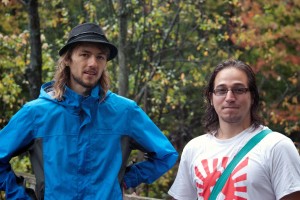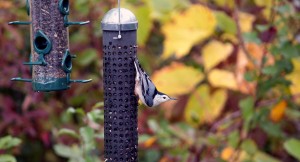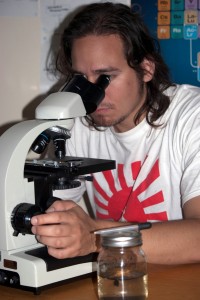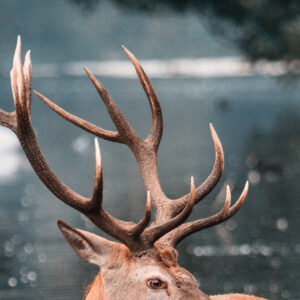Inside the Mudlake Biodiversity Project
“Do we have this one yet?” Harold Sotomayor asked his friend and project partner Patrick Killeen after we came across a white capped mushroom covered by bushes to the side of the trail.
“Well, let’s snap a photo of it anyways, just in case.”
Welcome to the world of the Mud Lake Biodiversity project, an ongoing citizen science experiment in which the goal is to document and record every living organism in the Mud Lake Conservation Area of Ottawa, Ontario. The project, which has attracted photo contributions from outside members of the community, is a mix of deductive science and taxonomic gamification and has helped its creators learn a lot about their local environment and its biodiversity.

Patrick Killeen (left) and Harold Sotomayor (right)
Sotomayor explained the initial idea stemmed from the television show and video game Pokemon which he used to watch and play as a child.
“When I started, the idea for the project was to create a catalogue like a Pokedex” Sotomayor said. “I genuinely thought we would come out here and find like five birds. I had no idea about how much I did not know.”
Home to over 200 species of birds, around 50 varieties of moss and hundreds of different trees and plants, Mud Lake is a naturalist’s dream. Located just west of downtown Ottawa, the area contains many ecological biomes including: a riparian section along the bank of the Ottawa River, a woodland area and wetlands around the lake itself.
Unlike the mass of wildlife found at Mud Lake, the project has remained reasonably quiet and contained. For the past four years, Patrick and Harold have been making trips out to the lake with a camera and documenting any life they find. Nothing is omitted from the project. Plants, animals, fungi, insects… even bacteria and protists, which Harold collects and analyzes at home under an electron microscope, are included and added to the growing database and website.

White breasted nuthatch at Mud Lake
“We began with just animals and plants, but once people started visiting the website, we sort of felt an obligation to expand and include everything,” Sotomayor said.
Patrick Killeen, 20, makes up one half of the pair. He is currently a computer science student at the University of Ottawa and is credited by Harold as having the greater taxonomic knowledge of the two.
“I wasn’t really interested in biology before the project,” Killeen said. “Growing up my dad would tell me stuff and I was sort of forced to learn the information. But then, after the project began, I actually wanted to learn so that’s when I gained a huge boost of knowledge.”
Harold Sotomayor, 29, is the creative mind behind the enterprise. He is currently using the site to work on his programming skills while working part time and also managing the biodiversity project.
The two have been able to parlay the project into educational opportunities with outside organizations. Harold and Patrick have led educational tours through Mud Lake with adult high school students as well as by leading tours at Nature Canada’s fall BioBlitz event.

Harold gets a close look at bacteria and protists under the microscope
The pair want the project to remain small and without ads and said their next goal is to include more of the areas diverse mosses and insects.
For those interested in learning more about the project, or contributing to the growing collection of photos you can check it out at: www.mudlakebiodiversity.com. The site is also expected to receive a coming user interface revamp in the coming weeks with new graphics.
Thank you to our guest blogger Dylan Copland for this post and photos. Dylan is a journalist and media specialist living in Ottawa, Ontario. He is currently volunteering with Nature Canada where he is writing about animals, nature and the people who love them. You can reach him at dmcopland@gmail.com and find his portfolio on the web at: dylancopland.wordpress.com.



